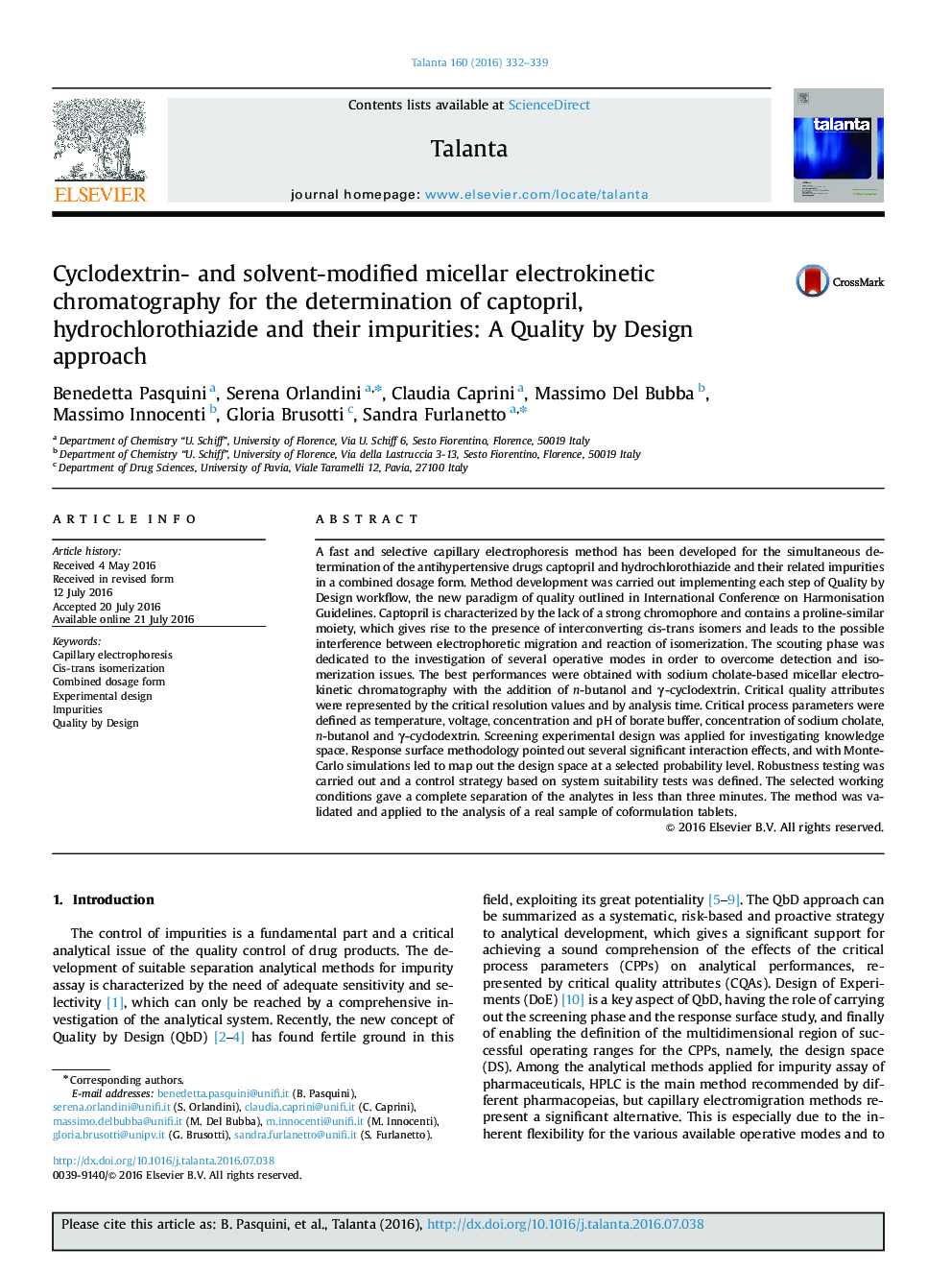| Article ID | Journal | Published Year | Pages | File Type |
|---|---|---|---|---|
| 1243265 | Talanta | 2016 | 8 Pages |
•A CE method for the assay of a coformulation was set up by Quality by Design.•Captopril, hydrochlorothiazide and their impurities were the analytes of interest.•The scouting phase allowed detection and isomerization issues to be overcome.•Solvent- and cyclodextrin- modified MEKC was the selected operative mode.•Probability maps enabled the definition of the design space.
A fast and selective capillary electrophoresis method has been developed for the simultaneous determination of the antihypertensive drugs captopril and hydrochlorothiazide and their related impurities in a combined dosage form. Method development was carried out implementing each step of Quality by Design workflow, the new paradigm of quality outlined in International Conference on Harmonisation Guidelines. Captopril is characterized by the lack of a strong chromophore and contains a proline-similar moiety, which gives rise to the presence of interconverting cis-trans isomers and leads to the possible interference between electrophoretic migration and reaction of isomerization. The scouting phase was dedicated to the investigation of several operative modes in order to overcome detection and isomerization issues. The best performances were obtained with sodium cholate-based micellar electrokinetic chromatography with the addition of n-butanol and γ-cyclodextrin. Critical quality attributes were represented by the critical resolution values and by analysis time. Critical process parameters were defined as temperature, voltage, concentration and pH of borate buffer, concentration of sodium cholate, n-butanol and γ-cyclodextrin. Screening experimental design was applied for investigating knowledge space. Response surface methodology pointed out several significant interaction effects, and with Monte-Carlo simulations led to map out the design space at a selected probability level. Robustness testing was carried out and a control strategy based on system suitability tests was defined. The selected working conditions gave a complete separation of the analytes in less than three minutes. The method was validated and applied to the analysis of a real sample of coformulation tablets.
Graphical abstractFigure optionsDownload full-size imageDownload as PowerPoint slide
